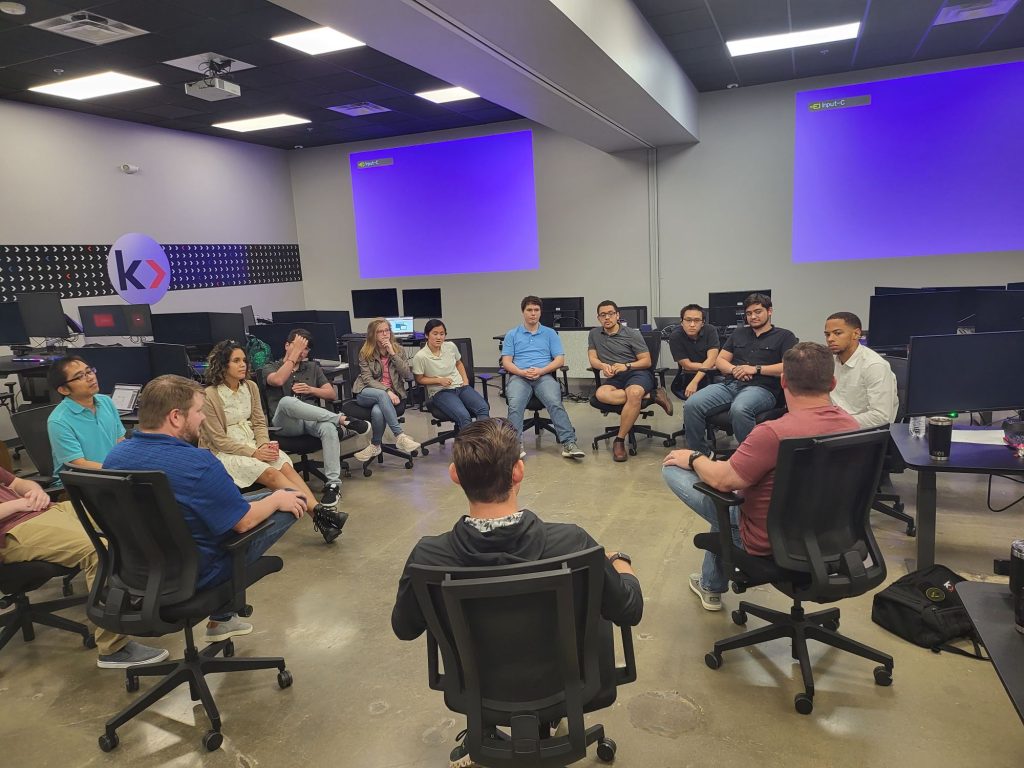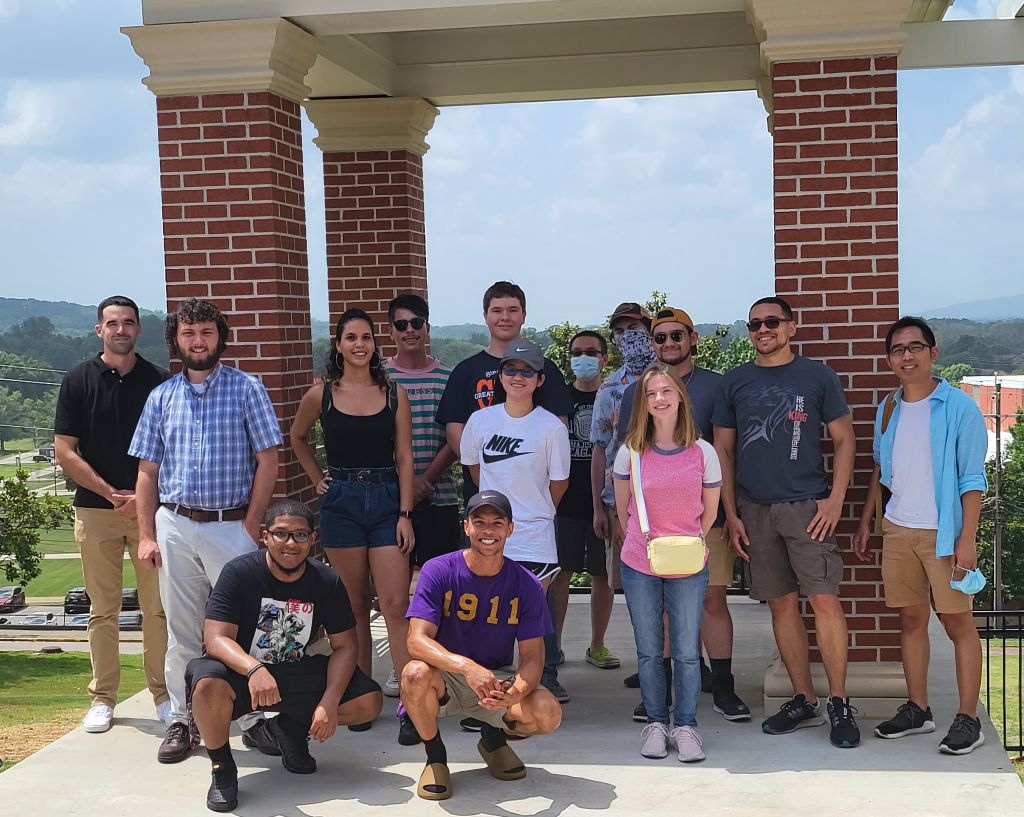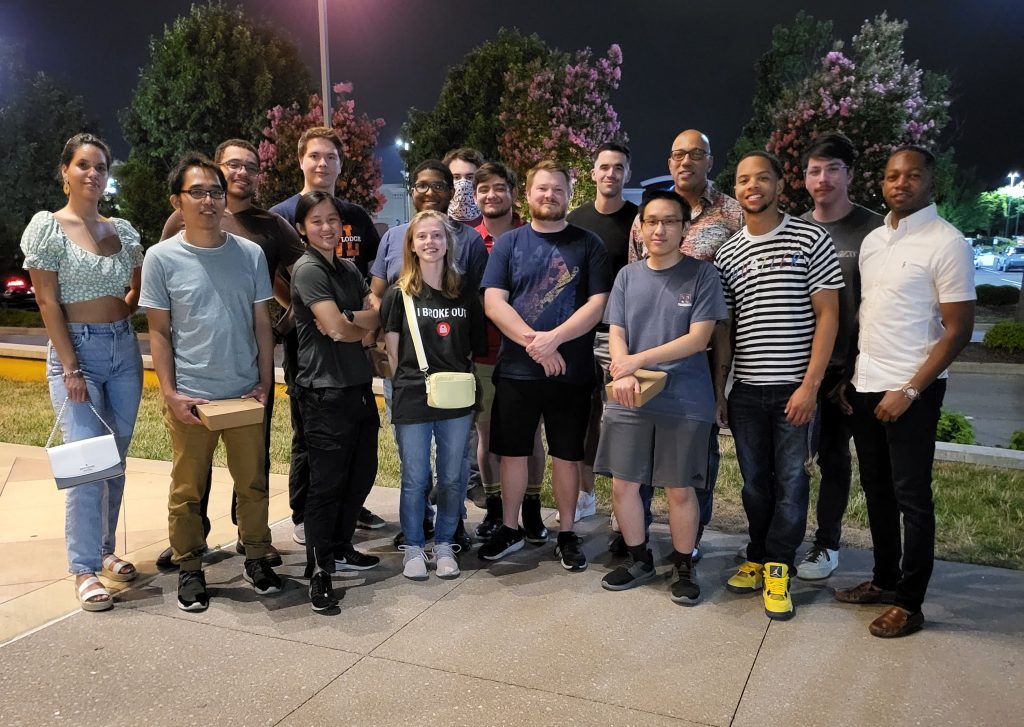
The Army’s Pathfinder Program encourages college students to pursue federal careers in cybersecurity and emerging technology fields.
by Rebecca Wright
Presently, the demand for cyber professionals exceeds the talent pool. With an aging government workforce and the commercial sector appealing more to younger employees, the requirement to recruit and retain knowledgeable experts is at an all-time high. According to the Cybersecurity and Infrastructure Security Agency, the definition of cybersecurity “is the art of protecting networks, devices and data from unauthorized access or criminal use and the practice of ensuring confidentiality, integrity, and availability of information.”
“In terms of security, we’ve got to get back to habits we had during the Cold War as far as keeping ourselves more secure against a sophisticated enemy,” Douglas Bush, the assistant secretary of the Army for acquisition, logistics and technology (ASA(ALT)), told a media roundtable at the Pentagon in February 2022. “That applies to both cyber and supply chain in particular in my world,” adding, “Cyber testing is an area where improvements need to be made.”
Risks to the federal government’s information technology (IT) systems are on the rise. In fiscal year 2021, the U.S. Government Accountability Office reported 32,511 information security incidents. In November and December 2021, Chinese hackers gained access to five U.S. defense and technology agencies and obtained passwords to access the agency’s IT systems. The need to stay ahead and prevent cybersecurity attacks remains a top priority for the federal government, and the Army recognizes this. As a response to a congressional mandate and with cyber threats intensifying, in a collaborative effort DOD’s Director of Operational Test and Evaluation Office and the Threat Systems Management Office (TSMO) within the Program Executive Office for Simulation, Training and Instrumentation (PEO STRI) established the Pathfinder Program to encourage current college students into cybersecurity career fields within the Army Acquisition Workforce.

ROUNDTABLE WITH THE RED TEAM: Students participate in a roundtable session to discuss being in the field of cybersecurity. They were joined by two red team members to provide students an opportunity to engage in a question-and-answer session at the Millennium office in Huntsville, Alabama. (Photos provided by Nicholas Steward, PEO STRI Threat Systems Management Office)
THE PATHFINDER PROGRAM
Nicholas Steward is a red team lead—cybersecurity professional who attempts to hack IT systems to identify weaknesses—with TSMO and also serves as a government lead and mentor for the Pathfinder Program. Steward first became involved in Pathfinder in 2020. What started out as a part-time effort has since grown into a full-time roll. “The goal for the Pathfinder Program is to grow the next generations of federal government professionals,” said Steward. “There is a growing need for cyber talent not only in the U.S. but specifically the DOD. The program is designed to bring awareness, gain interest and ultimately recruit and retain quality cyber talent.”
“Many young individuals are aware that pursuing a career as a lawyer, doctor, etc., can lead to financial stability and [a] rewarding job,” Steward said. “If the individual is in cybersecurity, they may not consider the DOD as a primary option for fulfilling a career in cybersecurity. My aim is to create a pathway that exposes [nongovernment] individuals [typically with degrees in a cyber related field] about the excellent career[s] within the DOD.” Currently 25 colleges are participating in the Pathfinder Program.
Pathfinder consists of three interactive elements: internships, scholarships, and research and development (R&D). The internship element provides field-specific apprenticeships, on-the-job training and mentoring. Scholarships provide funding through the Cyber Scholarship Program (CySP) and offer students career paths, scholarships provided and sponsored by PEO STRI, and two paid summer internships. In addition, students participating in the CySP will commit to government service following their graduation. The R&D element of the program consists of professor-led teams of students addressing critical cyber issues, assisting in the development of tools that PEO STRI will use for testing, as well as engaging universities in the federal contracting process and assigning DOD projects to universities. Additionally, the R&D element not only provides students an opportunity to participate in work within DOD but also serves as a resource for the test and evaluation community.
Within the internship element, Pathfinder offers a SkillBridge training option for active-duty military. SkillBridge is defined by the Office of the Secretary of Defense as “an opportunity for service members to gain valuable civilian work experience through specific industry training, apprenticeships or internships during the last 180 days of military service prior to release from Active Duty.” Every year, over 200,000 service members transition out of the military. Through Pathfinder, transitioning service members can receive on-the-job training for the last six months of their service, providing them with work experience and preparation for a career in the civilian workforce, all while still being compensated by the military.
One of Pathfinder’s focuses is training future security professionals in a red team role. According to the National Institute of Standards and Technology, a red team is “a group of people authorized and organized to emulate a potential adversary’s attack or exploitation capabilities against an enterprise’s security posture.” As a red team member, a cyber professional assumes an offensive role as an attacker by attempting to identify and exploit vulnerabilities and breach IT systems. By educating and certifying cybersecurity professionals in a red team role, they can aid organizations by imitating a cyberattack on the network, therefore identifying weaknesses. Once these weaknesses have been identified, preventative measures can be implemented to prevent a real-world adversarial attack.
To complement a red team, an agency or organization can establish a blue team. A blue team member acts in a defensive role, analyzing and monitoring IT systems for vulnerabilities and putting proper security measures into place to prevent cyberattacks. A blue team may also be responsible for training an organization’s workforce on cybersecurity best practices.
Both teams will often engage in exercises simultaneously: The red team will attack the network and the blue team will respond and attempt to defend it. By working together, both teams work toward a common goal: keeping our nation’s networks safe.

PATHFINDER STUDENTS UNITE: Pathfinder graduate Joshua Gibbons, second from left, and current Pathfinder student Serra Nolan, third from right, visit Alabama A&M University with fellow Pathfinder students.
LET’S HEAR FROM THE PATHFINDER PARTICIPANTS
To stay engaged, Steward often visits students at school and during their internships. He visits to answer any questions they may have, and to help prepare and guide them for their future.
“The team and I wish we had an opportunity like this while we were their age, so we try to provide them with things we wish we had to help them in their future career early,” Steward said. “I try to be a positive impact any way I can in the program for all involved.”
A positive impact to Pathfinder students like Serra Nolan and Joshua Gibbons.
Serra Nolan is a student at the University of Alabama in Huntsville and is enrolled in the Pathfinder Program. Nolan is currently pursuing her B.S. in cybersecurity engineering. When asked what attracted her to the program, she said it was her excitement to learn and use cyber skills, meet new people, the opportunities to get hands-on experience in real-world situations and to obtain certifications. “You’re going to learn so much,” Nolan said of the Pathfinder Program. “You’re going to get to meet people that have a wealth of knowledge and it’ll be a good start to your career.”
Nolan began studying cybersecurity in college, but during her sophomore year she was uncertain about moving forward with the area of study. She mentioned she wasn’t sure if it was the path that she wanted to continue on, but after she enrolled in the Pathfinder Program through her university, she said, “It was what definitely solidified in my mind that cybersecurity was what I was wanting to do with my career.”
Through the Pathfinder Program, Nolan can work on obtaining the certifications she needs to help with her future career goals. “It’s very hard to get all of the certifications that you need to be able to be considered a professional in this industry,” she said. “But this program offers you a chance to get those certifications.” She added that the program is a “foundational part of my career that I don’t think I could have gotten anywhere else, honestly. I’ve met tons of people and got certifications to get started in the workforce. I already have the foundational skills because of this. So, it’s really wonderful. … They take us on tours of government facilities that do cybersecurity. So, we’ve definitely been in close contact, and we know how it works. So, it’s very beneficial to get to know that you can do that.”
Nolan is enrolled in the CySP element of the program and expects to graduate in May 2024. Following graduation, she will have the opportunity to begin her federal career within the Army civilian workforce to support the PEO STRI TSMO. When asked about starting her new career, Nolan said, “I am very excited and look forward to all I can learn and experience!”
In December 2021, Joshua Gibbons graduated from the Pathfinder Program. Gibbons is a graduate of Mississippi State University, where he completed an M.S. in cyber operations and a B.S. in computer science. After finishing his B.S., Gibbons wanted to complete his master’s but wasn’t sure what he wanted to specialize in. After studying computer science he had an interest in cybersecurity, although he had not taken any classes, nor did he have any experience. After speaking with the head of the cybersecurity program at Mississippi State, he was informed about the Pathfinder Scholarship Program. He applied, was accepted, and once he was engaged in the program, he knew that supporting the Army Acquisition Workforce in cybersecurity is what he wanted to do.
“The Pathfinders program gave me actual hands-on practical application of what I was learning. So, I really gained a lot from that,” Gibbons said during his internship. “I was able to make connections with people that I’m actually working with now.”
When asked if he would recommend the program to other students, he said, “Absolutely. I’ve talked to other people that are [studying] cyber at other universities and the common issue right now is that it’s not as hands on as it needs to be. So, there’s a lot of on-the-job training that has to happen. So I would absolutely highly recommend that program to students because they can start developing some of those practical skills to go with their academic training as well.”
After completing the Pathfinder Program, Gibbons began his federal career as part of the Army civilian workforce. He now has one year of government service working with PEO STRI TSMO as an intelligence specialist.

ROOM FOR ONE MORE: TSMO red team lead and Pathfinder Program mentor, Nicholas Steward, far right, joins the Pathfinder students for dinner in Huntsville.
FUTURE EXPANSION
Currently, there are 86 interns spanning across the 25 universities participating in the Pathfinder Program. Of those 25 universities, five are Historically Black Colleges and Universities and four are Hispanic Service Institutes. Research has shown that workplace diversity improves employee engagement and retention, increases creativity, and leads to quicker problem-solving and better decision-making. The Pathfinder Program will be capable of recruiting skilled individuals with fresh and innovative ideas because it engages with a diverse group of students. Additionally, included in the total number of Pathfinder interns, three are military service members enrolled in the SkillBridge portion of the program, providing these service members a pathway from active duty into the civilian workforce through training, apprenticeships and work experience.
When asked what he would like to see out of Pathfinder in the future, Steward said, “I would like to see the program grow and integrate with more agencies.” And it has. Since its inception, driven by a congressional mandate and funding provided in the 2020 National Defense Authorization Act, the program is quickly expanding across government agencies with aspirations to add blue team education and certifications for future students, incorporate additional computer and software testing, increase diversity and offer experience to support in-demand and hard-to-fill positions.
CONCLUSION
With the Pathfinder Program continuing to grow, so will the Army’s pool of cybersecurity talent.
“The most rewarding part of the program is watching the advancements made by the students,” Steward said. “From first meeting with students engaged in projects or internships, to watching their growth and development through the skills they learned, and finally, hearing about them getting a job after graduation and how the program assisted them to achieve their goals. That’s the best part.”
As the threat of cyberattacks increases, so does the need to fight against them. Not only do we need to continue to stay vigilant, but we need to stay ahead of the threat. These future experts will not only protect current national security systems, but future ones as well.
For more information, contact Intelligence Specialist and Pathfinder Lead Nicholas Steward at Nicholas.Steward2.civ@army.mil.
For information about SkillBridge go to https://skillbridge.osd.mil.
REBECCA WRIGHT is a writer and editor with Army AL&T magazine at the U.S. Army Acquisition Support Center at Fort Belvoir, Virginia. She has over 14 years of experience writing and editing for the Department of Defense and the Department of Justice.







